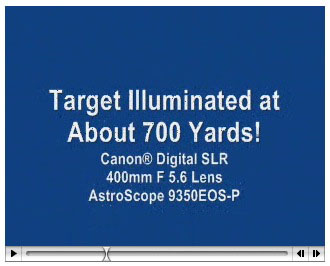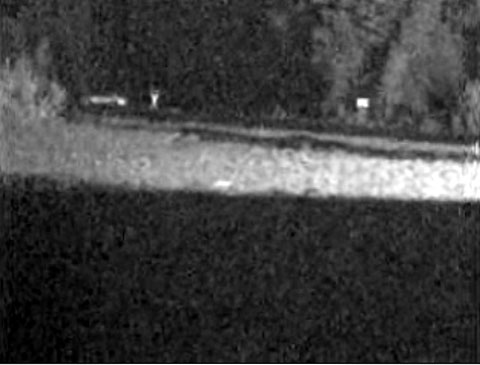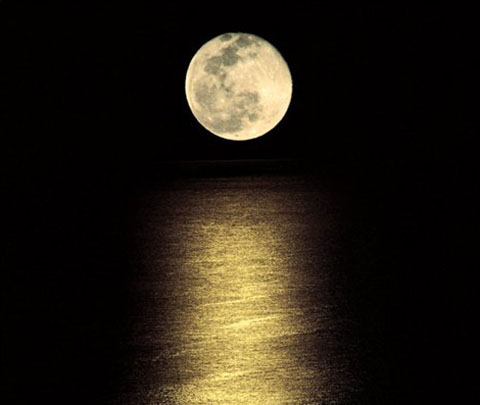by Lee Tepley on 15 January 2008
Why did the Hawaii Superferry (HSF) decide to suspend it’s proposed night operations to Maui until springtime?? Coincidentally springtime, is near the end of the whale season. Was it really all that concerned about the displeasure of Maui’s Mayor Tavares relating to traffic jams and undecided legal issues?? Or is it really more concerned about the increased probability of the Superferry
hitting a whale at night – and, even worse, getting caught in the act?? Go to the last paragraph for my personal guess.
But maybe I am just being an alarmist. After all, Terry O’Halloran has stated that the Superferry has night vision devices that operate with “remarkable clarity”. This implies that the Superferry is no more likely to hit a whale at night than during the daytime (which, of course, is inevitable - sooner or later).
So just how good are these “remarkably clear” night vision devices – say, for detecting a dorsal fin of a whale at the surface at night.
It seems that there are two types of night vision devices - goggles and scopes - and the Superferry has both.
First, lets consider night vision goggles. There may hundreds of different types on the market. You can buy one for your very own for from a few hundred to about 12,000 dollars. The term “generation 4” (or “gen 4”) refers to the most advanced type. Night vision goggles work by capturing and intensifying available light.
An on-line ad for a really fancy one (the ATN Cougar 4) states that it can pick up light about 150 yards away in pitch darkness and can identify objects about 100 yards away. (It is not made clear how it can pick up any light in “pitch darkness” – but never mind!) However, in moonlight, it will reach out pretty far –maybe even out to 1000 yards.
Let’s consider a dark night when the Superferry is creeping along at a mere 25 knots. Assume that an observer is actually looking through his goggles (instead of just drinking coffee) and detects a dorsal fin 100 yards ahead of the ferry. Now assume that it takes 10 seconds for the Pilot to respond to the observer. But in that 10 seconds the Superferry will have moved 140 yards. Whoops!! It will have hit the whale before the Pilot had time to take
action.
So the gen-4 night vision goggles will not work for detecting whales on a dark night – but they might work with a full moon.
Now, lets consider the other alternative – the night vision scope. The best one I found on Google is the Electrophysics AL-20 Infrared Illuminator. It claims to work out to 1000 yards on a dark night. This sounds promising. It puts out a beam of infrared light which bounces off a distant object, returns, and is then picked up by an infrared sensitive camera.
So how good a picture does it get?? Would it detect a dorsal fin of a whale breaking the surface at a great distance? You can judge for yourself because Electrophysics put out a short video showing it’s performance at distances from 300 to 700 yards. The video is attached to this e-mail as a Quicktime movie – but in case you can’t open it, I am also attaching a still picture taken at a distance of 700 yards. It shows a car, a man jumping
and a sign. Also, I think the bright band in the center represents an airstrip. I suspect that the car, the man and the sign all have light colors which would reflect light better than the trees in the picture. Anyhow, it does seem rather “remarkable” that the AL-20 works at 700 yards in the dark – but how well would it detect a dark colored dorsal fin of a whale breaking the surface of a dark colored ocean?? And how much easier would
it be to detect the same whale in daylight??
A few more points:
1. A night vision scope will not work in rain or heavy mist because the infrared light it puts out would be mostly absorbed before reaching the hypothetical dorsal fin that surfaced 700 yards away. Little or no light would be reflected back to the source,
2. An observer would have to be staring continuously at a grainy Black & White display on a computer screen (or monitor) looking for a small dorsal fin. The fin would be smaller than the “jumping little man” in the attached Quicktime video or the standing little man in the attached still picture. Also a “coffee-break” at the wrong time would spell disaster. The observer must never look away from the screen.
3. The Quicktime video appears to show the playback from a video camera. It would be really tough for an observer to keep staring at a small LED screen displaying a grainy black & white picture of mostly nothing for many hours– and then be looking away when a dorsal fin finally appears. To avoid self-hypnosis (and maybe loss of sanity), the observer must at least be able to look at the video on a large screen in real time. Let’s hope
that Electrophysics provides this option.
4. Finally, perhaps Terry O’Halloran and cohorts actually gave themselves a private demonstration and tried looking at a picture of the ocean at night on the large screen (if there is one) of a night vision scope with “remarkable clarity”. After a few minutes of staring straight ahead at a grainy and almost featureless picture of the ocean, Terry may have decided that maintenance of sanity required cancellation of all night operations
of the Superferry – at least for the remainder of the whale season.

video above: manufacturer's demonstration of night vision scope
Click on image to play.
|


